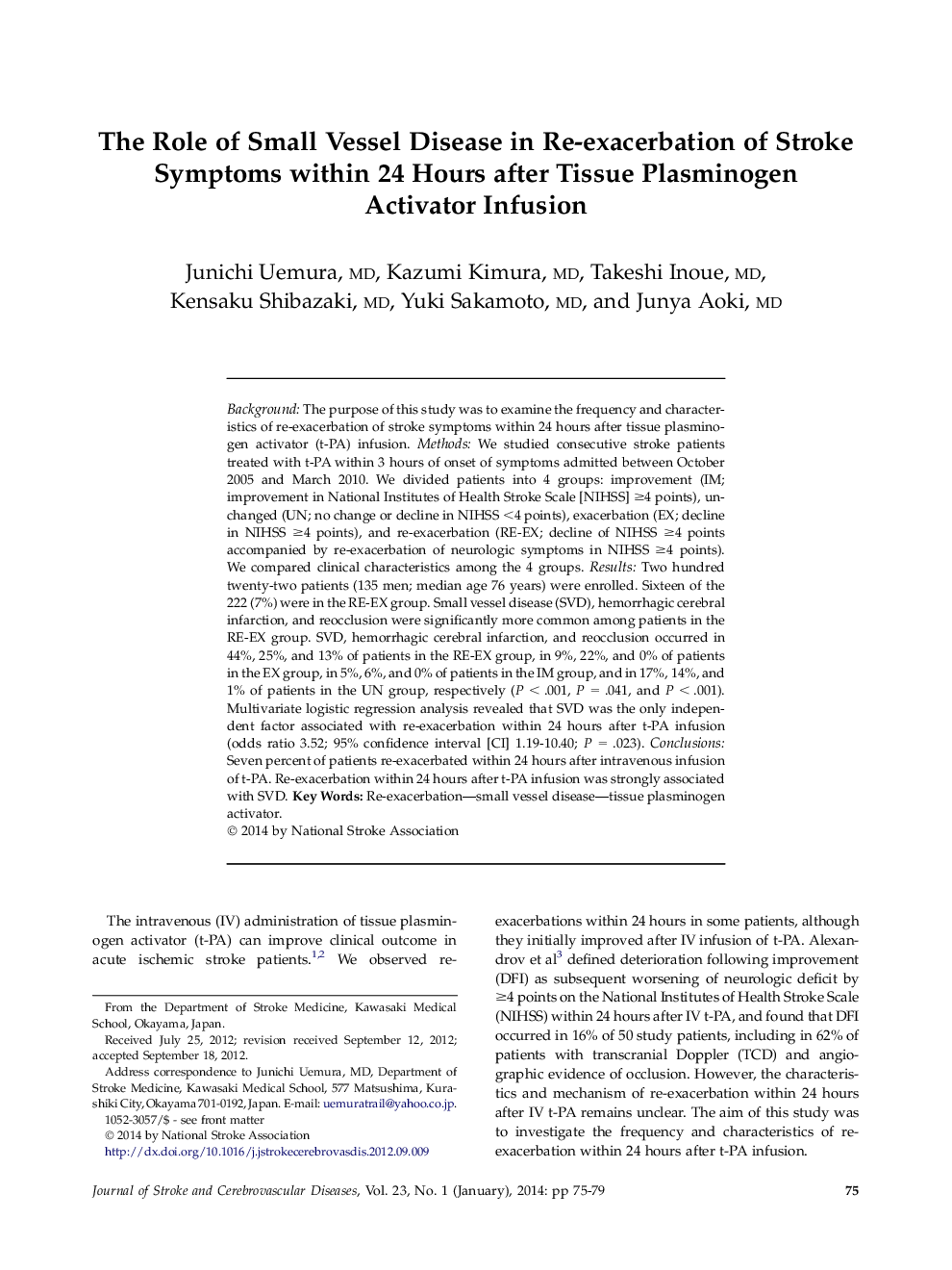| Article ID | Journal | Published Year | Pages | File Type |
|---|---|---|---|---|
| 2706139 | Journal of Stroke and Cerebrovascular Diseases | 2014 | 5 Pages |
BackgroundThe purpose of this study was to examine the frequency and characteristics of re-exacerbation of stroke symptoms within 24 hours after tissue plasminogen activator (t-PA) infusion.MethodsWe studied consecutive stroke patients treated with t-PA within 3 hours of onset of symptoms admitted between October 2005 and March 2010. We divided patients into 4 groups: improvement (IM; improvement in National Institutes of Health Stroke Scale [NIHSS] ≥4 points), unchanged (UN; no change or decline in NIHSS <4 points), exacerbation (EX; decline in NIHSS ≥4 points), and re-exacerbation (RE-EX; decline of NIHSS ≥4 points accompanied by re-exacerbation of neurologic symptoms in NIHSS ≥4 points). We compared clinical characteristics among the 4 groups.ResultsTwo hundred twenty-two patients (135 men; median age 76 years) were enrolled. Sixteen of the 222 (7%) were in the RE-EX group. Small vessel disease (SVD), hemorrhagic cerebral infarction, and reocclusion were significantly more common among patients in the RE-EX group. SVD, hemorrhagic cerebral infarction, and reocclusion occurred in 44%, 25%, and 13% of patients in the RE-EX group, in 9%, 22%, and 0% of patients in the EX group, in 5%, 6%, and 0% of patients in the IM group, and in 17%, 14%, and 1% of patients in the UN group, respectively (P < .001, P = .041, and P < .001). Multivariate logistic regression analysis revealed that SVD was the only independent factor associated with re-exacerbation within 24 hours after t-PA infusion (odds ratio 3.52; 95% confidence interval [CI] 1.19-10.40; P = .023).ConclusionsSeven percent of patients re-exacerbated within 24 hours after intravenous infusion of t-PA. Re-exacerbation within 24 hours after t-PA infusion was strongly associated with SVD.
